Selecting Lenses for Underwater Photography
Once you know what subjects you want to shoot, you can choose the right lens for the job
By Joanna Lentini
Getting started in underwater photography can be an exciting endeavor. Whether you’ve just purchased a DSLR, mirrorless, or made an upgrade from a compact, the next natural step is deciding which lenses to purchase. In this article, we’ll discuss the factors you need to consider in this important decision-making process.
Bringing a camera underwater opens up a world of possibilities to scuba divers. The plethora of subject matter is overwhelming and one can easily be pulled in different directions trying to capture it all. But, of course, not every subject can be photographed with just one lens. Therefore, knowing what it is that you want to shoot is a good starting point when picking lenses.
Budget vs. Premium Lenses
While there are different lenses for every budget, investing in a good lens is, arguably, far more important than the camera body itself, as premium glass provides superior image quality. High-end lenses have faster speeds and better optics—meaning less distortion and chromatic aberration—optimal color and contrast, and better flare resistance.
The speed of a lens is determined by its maximum aperture. The larger the aperture, or opening, the faster the lens. Lenses with fast speeds let more light through over a given time frame and allow for shallower depths of field. Just remember the faster the lens, the smaller the f-number.
Some lenses offer an image stabilization (IS) feature which can help stabilize images taken with longer focal lengths at slow shutter speeds, but lenses with this feature usually come at a higher price point. But underwater, especially when using a strobe, this feature isn’t particularly important.
Zoom vs. Prime Lenses
Weighing the benefits of a zoom or prime lens is something to consider when making a lens purchase. In order to provide a range of focal lengths, zoom lenses consist of multiple layers of glass and therefore produce softer images compared to a prime, or fixed, lens. In general, the less glass a lens contains, the sharper the final image will be.
Prime lenses usually offer faster speeds and produce superior images, but require photographers to move themselves rather than the lens barrel to get closer or farther away from a subject. The speed of a prime lens will be listed as just one f-number, whereas the speed of a zoom lens will be expressed as a range of f-numbers for the different focal lengths, such as f/4.5–5.6.
For some subjects, a lens’ ability to zoom can be crucial to getting the shot
Focal Lengths and the Crop Factor
Some of the typical focal lengths used in underwater photography are 45mm, 60mm, 100mm, 105mm, 10–17mm, 8–15mm, and 16–35mm. A lens' focal length is the distance between the lens and the camera’s image sensor when the subject is in focus, and is expressed in millimeters (mm). For zoom lenses, the range of focal lengths is stated, such as 10–17mm, whereas for a fixed (prime) lens, focal length is expressed as a single number, e.g. 100mm.
An important thing to keep in mind is digital cameras have sensors of different sizes—“full frame” sensors (the same size as traditional 35mm format film, or 36mm × 24mm) or “cropped” sensors (smaller than full frame, such as APS-C or Micro Four Thirds). The field of view for a particular lens is dependent on which camera body/sensor you have. If you are using a camera body with a cropped sensor, the focal length for each of your lenses will be multiplied by the crop factor of your particular sensor, typically between 1.4 and 2.7.
A 100mm lens used with a cropped sensor with a 1.6× factor will result in the field of view equivalent to that of a 160mm lens (100 × 1.6) on a full-frame camera. A crop factor can actually be a benefit with small critters or skittish sharks. In order to compare one lens with another, we refer to the equivalent focal length in 35mm film, or with full-frame sensor. For example, a Micro Four Thirds 8–18mm lens has a “35mm equivalent focal length” range of 16–36mm, since the crop factor is 2.
While some full-frame lenses may work on cropped sensor cameras, some lenses are made specifically for cropped sensors and will not work on a full-frame camera. Lenses for full-frame cameras typically retain their value more so than lenses for cropped sensors, and they also tend to be of higher quality. Lens manufacturers usually have their own abbreviations for their cropped sensor lenses, such as Canon EF-S or EF-M, Nikon DX, Sigma DC, Tokina DX, and Tamron Di II.
Wide Angle or Macro?
Generally speaking, new photographers tend to choose between the two main genres of underwater photography: wide angle and macro. Each has its own learning curve and requires different lenses and ports. Once a specific genre is mastered, shooters usually move on to photograph different subjects. If macro and wide angle are equally appealing to you, there is no reason why you can’t jump into both.
Wide Angle
As the name implies, wide-angle underwater photography allows photographers to capture expansive reef scenes, large pelagics and schools of fish. It is the genre of underwater photography that most photographers begin with. While some may think wide angle is easier than macro, properly lighting a wide-angle scene can be far more challenging.
A wide-angle reef scene
Macro
Perhaps it’s the tiniest critters in the sea that appeal to you? Whether it’s a nudibranch, candy crab, or some other alien-like, microscopic creature, macro photography focuses on the sorts of things most people easily overlook or don’t realize even exist. This genre of underwater photography can be very rewarding but requires a good deal of patience as achieving and maintaining focus on miniature life forms can take time.
Small critters are best photographed with dedicated macro lenses
Lens Types for Underwater Imaging
The three main types of underwater lenses are fisheye, rectilinear, and macro. Usually each lens will require a specific extension ring or dome port.
Fisheye Lenses
Fisheye lenses are important tools in wide-angle underwater photography. These ultra-wide lenses allow photographers to get very close to subject matter, which helps achieve sharp underwater images. The less water there is between the camera lens and the subject, the greater clarity an image will have.
With large marine life or wrecks, a fisheye lens allows photographers to capture the entire creature in the frame at a close proximity. These lenses create beautiful curves in the underwater world and should be used with dome ports. They are also very useful for split shots—part topside, part underwater images. Fisheye focal lengths range from 8mm to 17mm.
Larger subjects are best shot up close and with a fisheye lens
Rectilinear Wide-Angle Lenses
Rectilinear wide-angle lenses do not have the curves found in a fisheye lens. Rather they create straight lines with little to no barrel distortion. These lenses can be quite helpful with marine life that doesn’t approach divers closely. This is one lens that is great both topside and underwater, and many photographers choose it because of its versatility. The most widely used rectilinear focal lengths are 16mm to 35mm, and while there is a little overlap with the focal lengths of fisheyes, they are not equivalent.
A school of spadefish shot with a rectilinear lens
Macro Lenses
Used behind a flat port, macro lenses are capable of capturing stunning portraits of tiny life forms as well as interesting close-up portraits of fish. These lenses allow photographers to fill the frame with small subjects that would otherwise be lost with a wide-angle or fisheye lens. Typical underwater macro lenses have focal lengths of 45mm, 60mm, 100mm and 105mm.
The focal length of a macro lens determines how close you can get to your subject: A “short” macro lens (e.g., 60mm) focuses closer than a “long” macro lens (e.g., 100mm)
Final Thoughts
As with topside photography, the glass you choose can greatly impact the quality of your images. And, as we’ve discussed here, only certain lenses that are used topside will serve the underwater photographer or videographer well.
In subsequent articles, we’ll take an in-depth look at what the best lenses are for underwater work, for the different brands and sensor sizes.
RELATED CONTENT
Featured Photographer

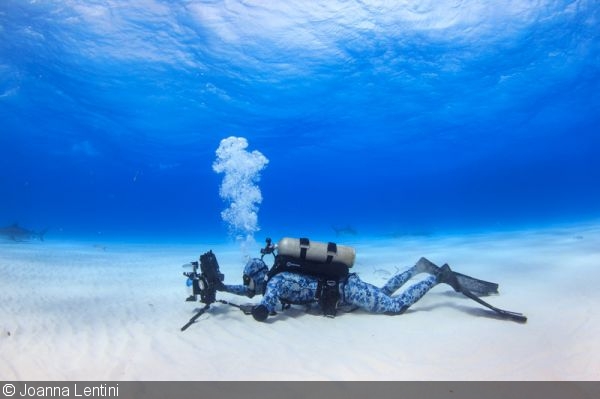

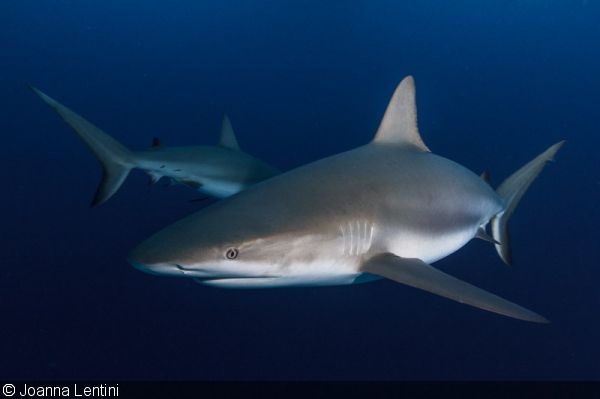
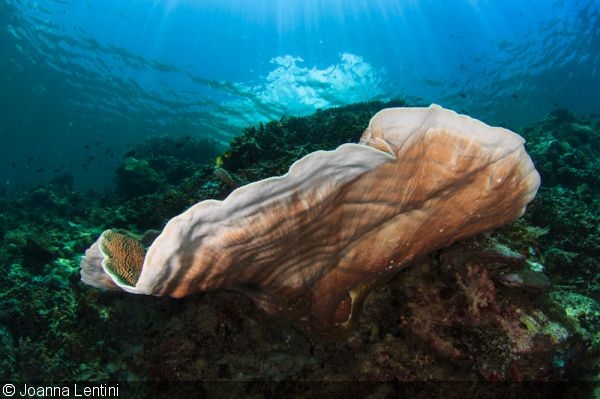

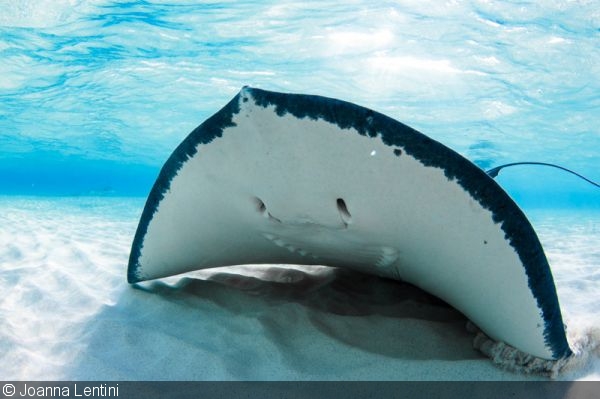
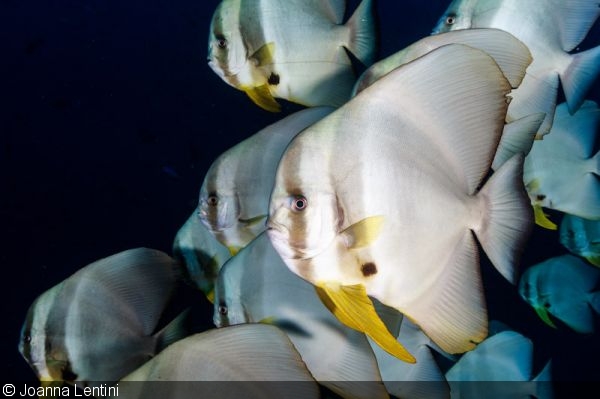
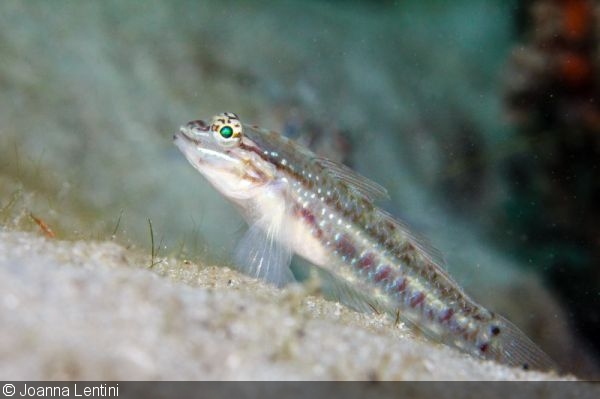
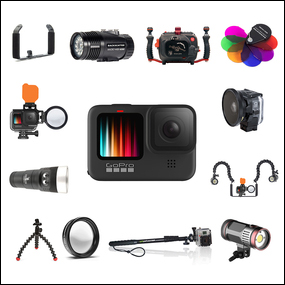
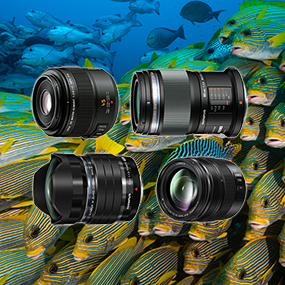
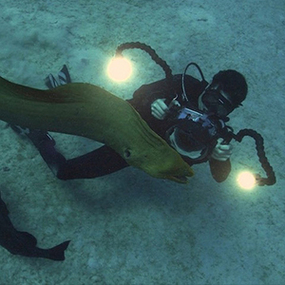

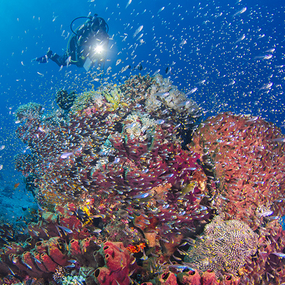
 Antarctica
Antarctica




